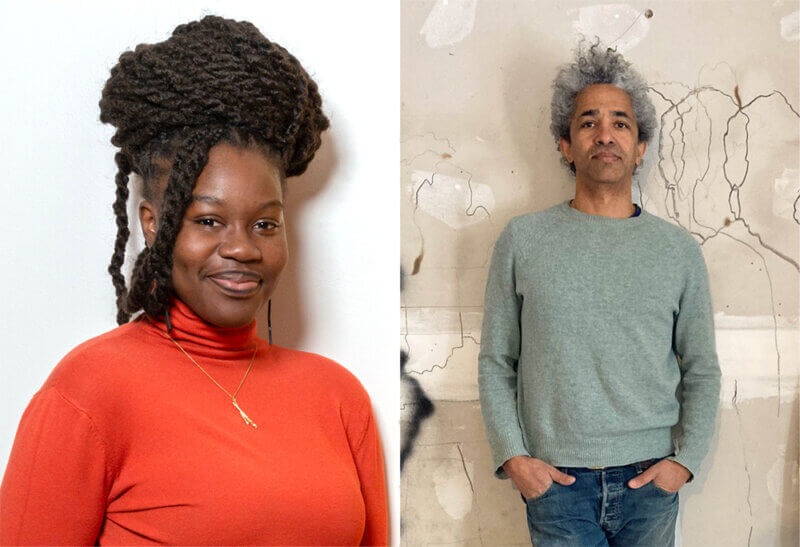Artist awards announced to share histories of Lake Champlain Basin
Clemmons Family Farm has announced the two winners of its new artist-in-residence program — Winosha Steele and William Ransom.
The program is called UnderWater, UnderGround: Black/Indigenous Creatives Historize Charlotte, Vermont’s Sea Change. The artists were selected from a competitive process open to artists in Vermont, New York and Quebec who self-identify as bearers of African-American, African Diaspora or Afro-indigenous cultures.
In a release, the Clemmons Family Farm said the purpose of the UnderWater, UnderGround artist residency program is to lift up the past, present and future experiences of the peoples of the African diaspora who reside or resided in the Lake Champlain Basin area. This program will support Steele and Ransom in researching and creating works concerning the history, cultures and geography of the area.
Ransom is primarily a sculptor whose work originates at the intersection of his material engagement and his investigations into personal history, collective history and agricultural experience. Ransom was born and raised on a Vermont dairy farm and his work is informed by his early experiences with the cycles and rhythms of the natural world.
Balance has always played an important role in his work, suggesting flux, movement, things in a state of becoming or diminishing. The forces brought to bear on the material pull into focus the tensions of our world’s current state and the ever-present potential for flare-up or collapse, the release said.
Ransom received his bacherlor’s in sculpture from Bennington College and master’s in sculpture from Claremont Graduate University.
His work has been exhibited in Los Angeles, New York, Albany, Minnesota and at the Brattleboro Museum. Most recently his solo show “HoldUp/UpHold” was at NE Sculpture in Minneapolis.

Winosha Steele, a Caribbean artist living in New York, incorporates her identity and passion fearlessly into her work, the release said. She creates her pieces with flamboyance, aiming to establish a connection between the viewer and the artwork. Steele believes that the concept of nuances produced in her work create meaningful conversations and deeper understanding of the world. Drawing inspiration from her Antiguan heritage, Steele’s art is boundary-pushing, yet deeply personal. Her desire to expand her artistic horizon and emphasize racial correlation, however radical, stems from being a small islander.
Despite her experience in sculpture, chalk pastels and a variety of paints, oil paint fascinates Steele the most, offering the freedom to bring her visions to life.
Steele received her bachelor’s from SUNY Plattsburgh and has exhibited in numerous local and regional exhibitions in New York.
The residency will run through December 2024, and each artist will receive $7,500, logistical support, art supplies, transportation assistance, occasional lodging and studio space on the historic Clemmons farm. One of the subjects of the artists’ research will be the 11,500-year-old skeleton of a Beluga whale, which was discovered in 1849, 10 feet underground and 2 miles south of the Clemmons farm.
The artists will make field trips to the beluga whale historic marker in Charlotte, the University of Vermont’s Perkins Museum where the whale skeleton is on exhibit and Mystic Aquarium in Mystic, Conn., where they will see live beluga whales.
Ransom and Steele will also research the history of the Underground Railroad in the area by visiting the historic McNeil homesteads in Charlotte, Rokeby Museum in Ferrisburgh, Vermont, and the North Star Underground Railroad Museum in Ausable Chasm, New York. The ECHO, Leahy Center for Lake Champlain will be another base for the artists’ research on the ecology of the area. Finally, the two artists will explore more contemporary stories of Black Vermonters who moved to make their homes in the state during the Great Migration and over the past several decades.
Creative outputs of Ransom and Steele’s artist residencies will include works-in-progress, artist talks and presentations, and co-creation art workshops for surrounding communities and visitors to the Clemmons farm. An UnderWater, UnderGround multimedia art exhibit created by the two artists will be installed at the Clemmons farm and open to the public in Fall 2024.
Clemmons Family Farm’s UnderWater, UnderGround artist-in-residence program is funded in part by an agreement awarded by the Great Lakes Fishery Commission to the New England Interstate Water Pollution Control Commission in partnership with the Lake Champlain Basin Program and, in part, by grants from the Vermont Arts Council and the National Endowment for the Arts.

